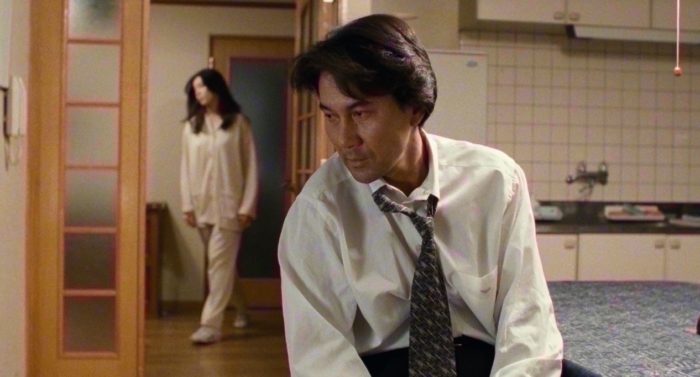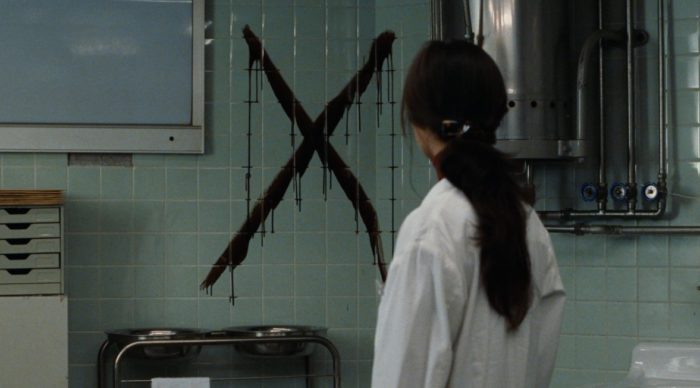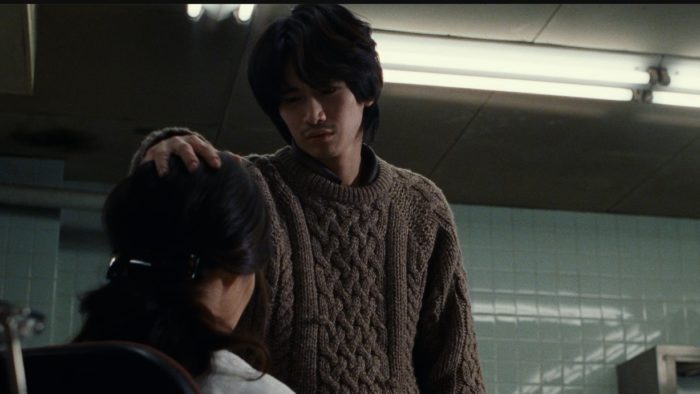
One of my favorite video essayists, KaptainKristian, released a video last January called, “The Melancholic Comfort of Late 90s Horror” and Kiyoshi Kurosawa’s Cure (although not strictly horror) reminded me of this video. There was a “vibe” that was unique to late 90s horror. As KaptainKristian points out, we were nearing the end of the Millenium and there was an underlying sense of dread. A somberness to films like; Ringu, The Sixth Sense, and The Blair Witch Project. A mournful age for the lonely with seemingly no… cure.
Released in 1997, Kurosawa’s thriller Cure predates the breakout J-Horror film Ringu by a year, but shares many similarities. Both films have a slow deliberate pace, a steady tension no matter what the setting. It could be a scene set in the middle of the day and you still wouldn’t feel safe.
Cure is about a detective named Kenichi Takabe (Koji Hashimoto–who recently won ‘Best Actor’ at the 2023 Cannes Film Festival for Perfect Days), investigating a string of unusual murders. Why are these murders unusual? Because not only did all of the killers carve an “X” into their victims, none of the killers remember why they committed crimes in the first place.
Eventually, it is discovered that all of these killers were hypnotized into committing the murders. Who’s responsible? Why? The search for these answers leads Takabe down a winding path that has him questioning his own sanity. Will he come under the same spell as these other “killers” and do something he will regret for the rest of his life? Is there a cure to his madness?
The film is slow. Almost to the point of tedium, but this is how Kurosawa catches you off guard. There will be a scene of two police officers casually hanging outside a police station that we hold on for a minute or two. Then, suddenly one of them will shoot the other one in broad daylight. No music. No sting. The whole scene being shot in one, unbroken wide. It reminds me of Michael Haneke but with a less sadistic bent–still sadistic, just less.
Koji Hashimoto is a sympathetic lead who simultaneously unnerves. He has a difficult relationship with his mentally ill wife, which constantly leaves you feeling like he’s just gonna snap at one point and kill her. The film is full of repetitive noises and symbols that are part of the killer’s method of hypnosis. In particular, there is an emphasis on the motion of water and the flame of a lighter (which explains the film’s Criterion cover).
I appreciate Cure more as art than entertainment. Kurosawa has a lot to say about human isolation and displays it in moody and gray compositions on the screen. There’s a sense of restraint in rarely resorting to jump scares or cheap tricks. There are occasional flashes of the surreal but nothing that takes you out of the movie. On the contrary, like Takabe, we are drawn further in with no way back. No release. No… cure.



